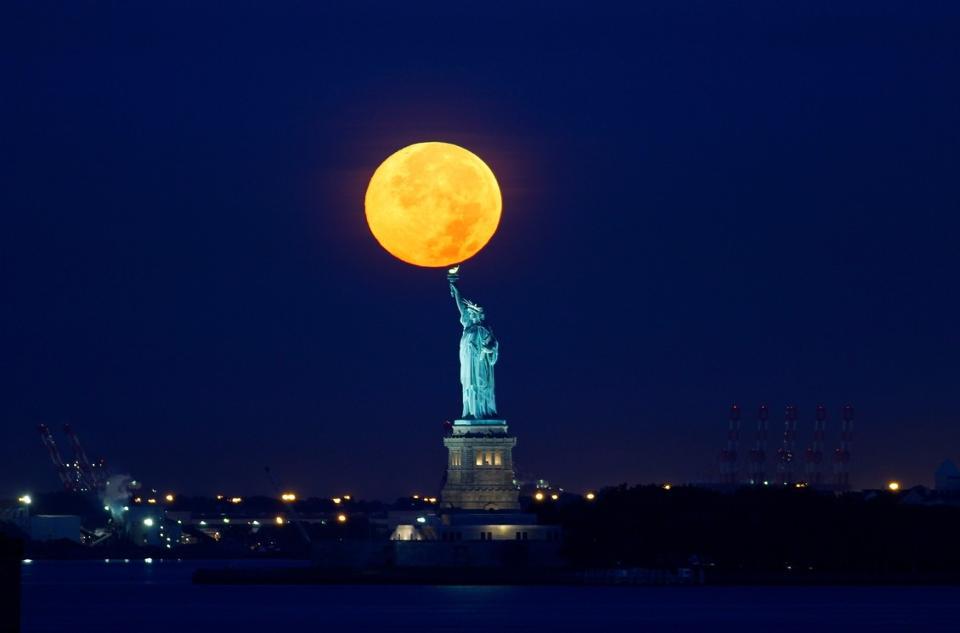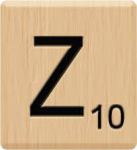
2018 going to be full of awesome space events that can be seen from here on Earth, lets take a look at some of the dates for your diary.
Jan 1st: Supermoon
The term supermoon refers to a full moon that takes place when the moon is at perigee, or its closest point to Earth in its orbit. On New Year’s Day at 5 p.m. EST, the moon will arrive at its closest point to the Earth in 2018: an extreme perigee distance of 221,559 miles away from Earth.
4 hours and 24 minutes later, the moon will officially turn full, meaning the two events don’t occur simultaneously. However, the moon is technically full for only a moment (when its face is fully illuminated by the sun), and the difference between the full moon and the nearly full moon is imperceptible to most observers.
In addition, the near coincidence of this full moon with perigee will result in a dramatically large range of high and low ocean tides. Any coastal storm at sea around this time will almost certainly aggravate coastal flooding problems. Such an extreme tide is known as a perigean spring tide. While this will be the biggest full moon of 2018, the increased size of the satellite in the sky, caused by the variation of the moon’s distance, is not readily apparent to most observers.
Jan 6th-11th: Predawn Planetary Summit
The god of war and the king of the planets have a summit in the early morning Jan. 6 through 11, in the zodiacal constellation of Libra. As the year begins, Mars is passing just 0.7 degrees north of the double star Zubenelgenubi (a good object to observe with binoculars), with Jupiter just to the east in the same binocular field. Mars will pass 0.2 degrees south of Jupiter in a splendid conjunction. (Your clenched fist, held at arm’s length, takes up about 10 degrees on the dome of the sky.) And then, these two planets will form a wide trio with the waning crescent moon on Jan. 11.
Jan 31st: Super Blue Moon Total Eclipse
The second full moon of January a Blue Moon, will be totally eclipsed by the shadow of the Earth. The Pacific Ocean is turned toward the moon when this takes place; the event will occur more or less during the middle of the night in that region.
To the west of the Pacific Ocean, for central and eastern Asia, Indonesia, New Zealand and most of Australia, a fine view of this moon show will be had in the evening sky. Heading farther west, into western Asia, the Indian subcontinent, the Middle East and Eastern Europe, the eclipse will already be underway as the moon rises. To the east of the Pacific Ocean, Alaska and northwestern Canada see the eclipse from start to finish as does Hawaii between midnight and dawn, while for the rest of North and Central America, moonset will intervene before the event is through.
The farther east you go, the closer the start of the eclipse will coincide with moonset. Along the U.S. Atlantic Seaboard, for instance, the moon will have only just begun to enter the Earth’s umbra when the satellite will disappear from view below the west-northwest horizon. The duration of the total phase is 76 minutes with the moon tracking through the southern part of the Earth’s shadow. So, during totality, the moon’s lower limb will appear brightest, its upper limb darkest.
March 28th: Venus And Uranus Embrace
You’ll get an excellent opportunity on March 28th to see Uranus as the seventh planet from the sun has an extremely close conjunction with Venus in the evening. The two will be separated by just 4 arc minutes on the sky, but by a factor of 10,000 in brightness. A small telescope or even a simple pair of binoculars should show you the conjunction.
April 22nd-28th: Venus And 7 Sisters
The brightest planet is within 5 degrees of the beautiful Pleiades star cluster (also known as the Seven Sisters) during this time. The minimum separation between the two will come on April 25, when they will be 3.5 degrees apart. You will be able to this through a good pair of binoculars or a telescope.
July 27th: A Long Total Eclipse
This exceptionally long total lunar eclipse will be visible throughout most of the Eastern Hemisphere. The moon will appear directly overhead from a point only a few hundred miles off the east coast of Madagascar in the Indian Ocean. The total phase will last 103 minutes, just 4 minutes shy of the absolute longest that a total lunar eclipse can last. The reason for the extreme duration is that the moon passes almost directly through the center of the Earth’s shadow. Because the moon is also at apogee its farthest point from Earth in an orbit this same day, it is moving at its slowest speed, and so will take an inordinately long time to move through the Earth’s shadow. Much of Japan and eastern Australia will see the moon set while in total eclipse. The central and eastern portions of South America will see the moon rise either during or after totality. Unfortunately, no part of this eclipse will be visible from North or Central America. Aug 11th-12th: The Perseids The Perseid meteor shower coincides with a new moon in 2018, which means the sky will be exceptionally dark. And this year, the display also falls on a weekend. The Perseid meteors are considered the Old Faithful of the midsummer sky, because it is the most reliable yearly meteor shower; the Perseids can counted upon to faithfully provide a fine display of many bright meteors in most any year.The location of the radiant in the sky is within the constellation Perseus, which gives the shower its name. The shooting stars are bits and pieces of the Comet Swift-Tuttle, which visited the inner part of the solar system in 1992. Occasionally, the Perseids will produce outstandingly bright meteors, called fireballs, and exploding meteors, called bolides. The best time to watch is during the predawn hours of Sunday, Aug. 12, but the morning before and the morning after are still quite good.
July 27th-31st: The Summer Of Mars The Red Planet arrives at opposition to the Sun on July 27 ,meaning it lies on the opposite side of Earth, in the zodiacal constellation of Capricornus and visible from dusk to dawn and shining at an magnitude of minus 2.8, a full four times brighter than Sirius, and more than twice as bright as mighty Jupiter.So bright does Mars become that between July 7 and Sept. 6 it will supplant Jupiter as the second brightest planet and become the third brightest object in the nighttime sky ,next to the moon and Venus. Then on July 31 at 3:50 a.m. EDT (0750 GMT), the planet will make its closest approach to Earth since its historically close approach in August 2003, when Mars was 34.8 million miles away from Earth. Mars’ distance from Earth on July 31 will be 35.78 million miles. Not until September 2035 will it come so close again.
Dec 13th-14th: The Geminids The Geminids are scheduled to reach their maximum late on the night of Dec. 13 and into the morning hours of the 14th, when nearly 100 slow, graceful meteors per hour may be seen under ideal dark sky conditions. Viewers should wait until the nearly first quarter moon sets during the mid evening hours and look near the star Castor in Gemini. While a fair number of meteors should be visible after that time, the very best time to watch will be at around 2 a.m. local time. Expect small, faint meteors to dominate on the nights prior to the peak; during and after the peak, however, bright meteors and fireballs should appear. Mid December: Naked Eye Comet A small, dim comet that circles the sun about every 5.5 years and is normally visible only with telescopes might put on a short lived show a couple of weeks before Christmas. Comet 46P/Wirtanen will make its closest pass ever to the Earth on Dec. 16. At a distance of 7.2 million miles 11.6 million km, this comet conceivably could become as bright as third magnitude as it races northward through the constellation Taurus. If so, it will become visible to the unaided eye and should be very easy to find using binoculars and small telescopes. Post comments and questions below
Advertisements Share this:



![Black-crested Titmouse1280x908] 01](/ai/039/663/39663.jpg)

